 Emerald Ash Borer
Emerald Ash Borer We had our woods logged six years ago and the logger took all the marketable ash trees that were 16 inches in diameter at chest height and were still healthy. He explained to us that in five or six years they would be infected and the wood would be worthless. He was spot on it appears. Today 90% of our ashes are dead or declining quickly.
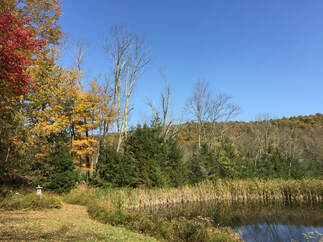
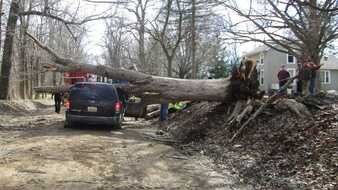
So what about our trees now? You do not see it from the outside; usually they just break and fall. We went through such an “event” last week. We had a little wind and suddenly the power went out. One of the ashes fell on the electricity line. It took the provider almost ten hours to repair it.
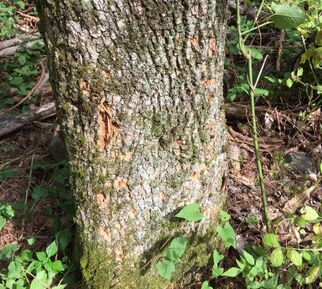 Holes from a hunting woodpecker
Holes from a hunting woodpecker 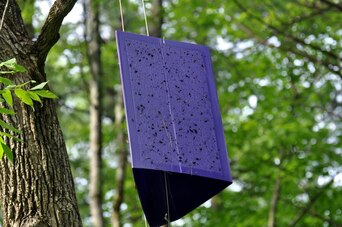
In the eastern U.S. we have gone through many blights. In the early 1900's the chestnut blight killed all of them and changed the forest forever. Our old barn, which was built in the1850’s out of old growth chestnut, is still going strong. After the chestnut blight, the elms were killed by an exotic bark beetle. Then we lost almost all our beeches, which after 30 years are coming back now. And now the Emerald Ash Borer (EAB), an Asian insect, which was first discovered twenty years ago in Detroit, Michigan. It is assumed that it was hidden in wooden crates or packing material from China. It is the most destructive insect ever to invade the U.S. So far it has killed millions of ash trees and was found first in 18 states, along with Ontario and Quebec, and then in all the eastern United States. I still remember when I first saw the purple EAB trap in our County, trying to confirm that it had arrived. Somehow I cannot help thinking of Covid19 now!
Scientists have found that most EAB stay within about a half a mile from where they first were spotted. A few of the females however are able to fly three miles and find new ash trees.
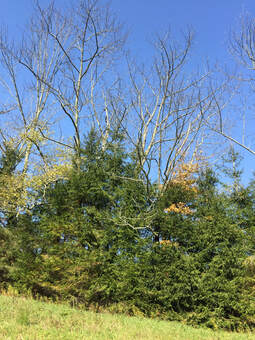
In China the EAB is only a secondary pest, attacking only dying ash trees. Because it is an indigenous species there, it has natural controls. We don't have that, and trying to import those natural controls could be even more dangerous. The ash trees in North America have no- or only few, defenses to resist this pest.
There is much hope that a native tiny wasp might come to the rescue. It has not been studied enough, but it seems to have become more common where ashes are dying, teasing the hope that the wasp's numbers are increasing because they are preying on EAB? . If this native predatory wasp is expanding in response to the explosion of EAB, that would be possibly great news. Perhaps nature will save us with a home grown predator. Unfortunately, this is all 'blue sky' wondering. We don't have a solution right now. Considering all the other invasive species stories in this country resulting from global trade, the prospects are grim.
Scientists have tried insecticides and tree girdling or “SLAM” (Slow Ash Mortality), before the larvae can go to work. Scientists hope to slow the death of all ash trees, but it is a struggle.
It seems likely that we have to kiss millions of ash trees goodbye, before we find a solution. We sincerely hope not!!
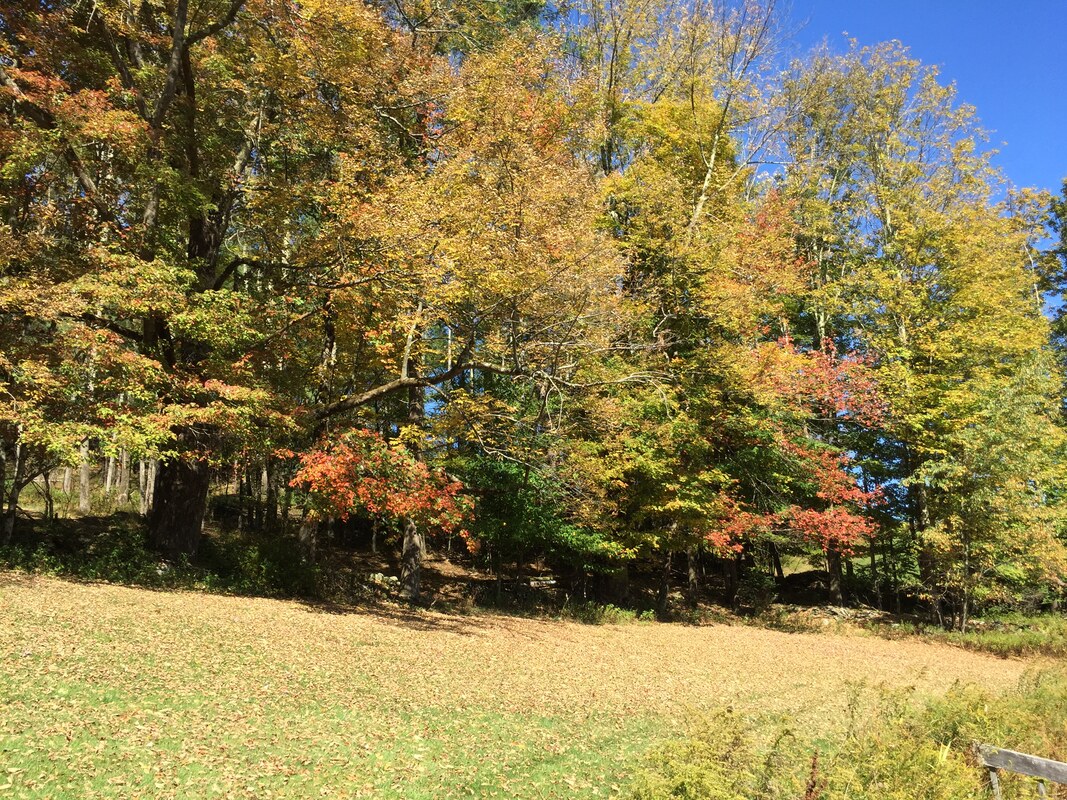
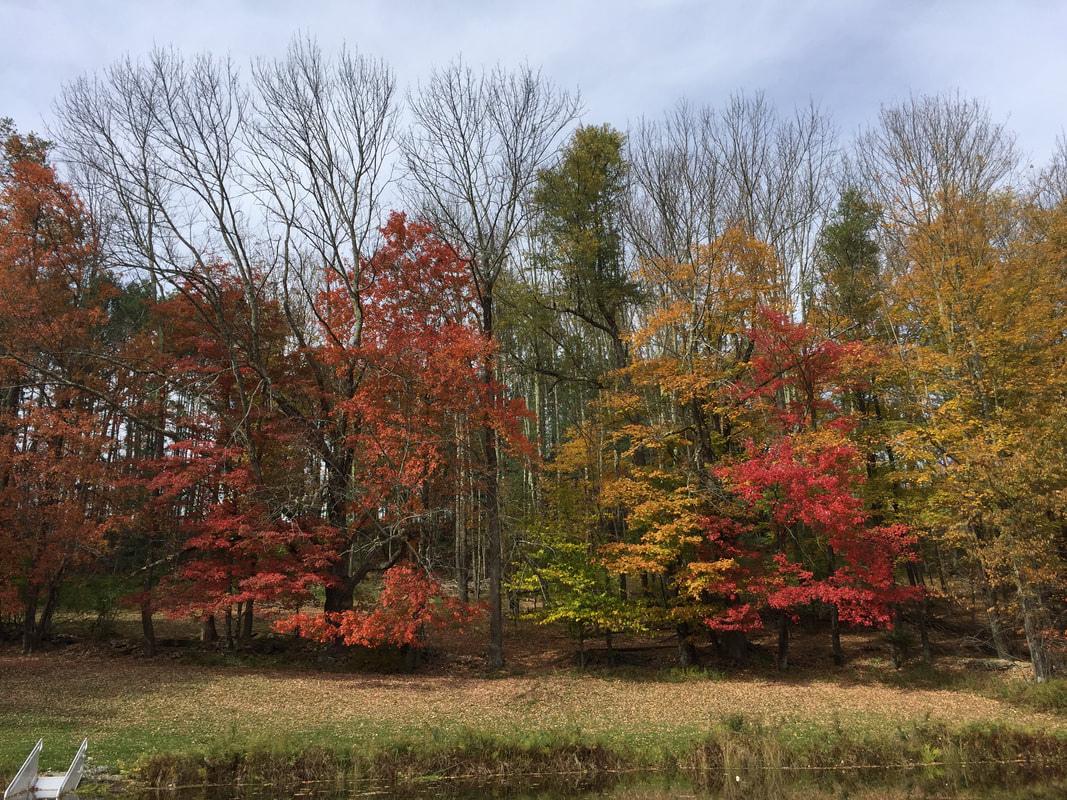
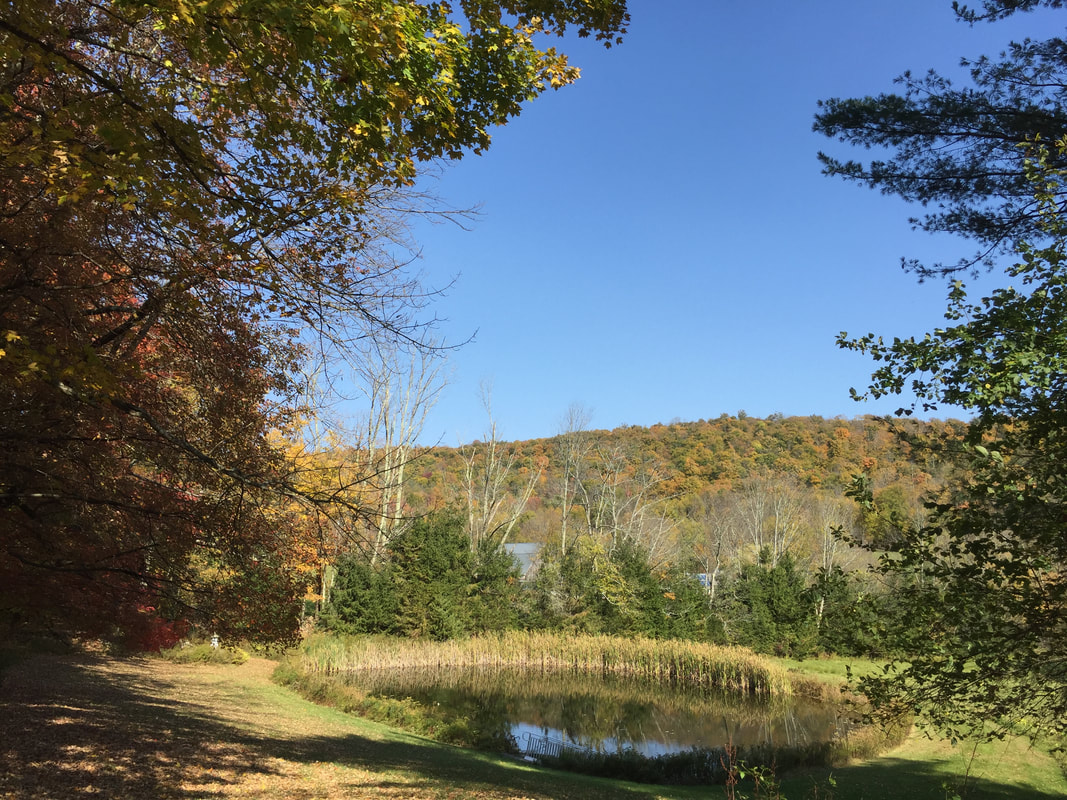
 RSS Feed
RSS Feed